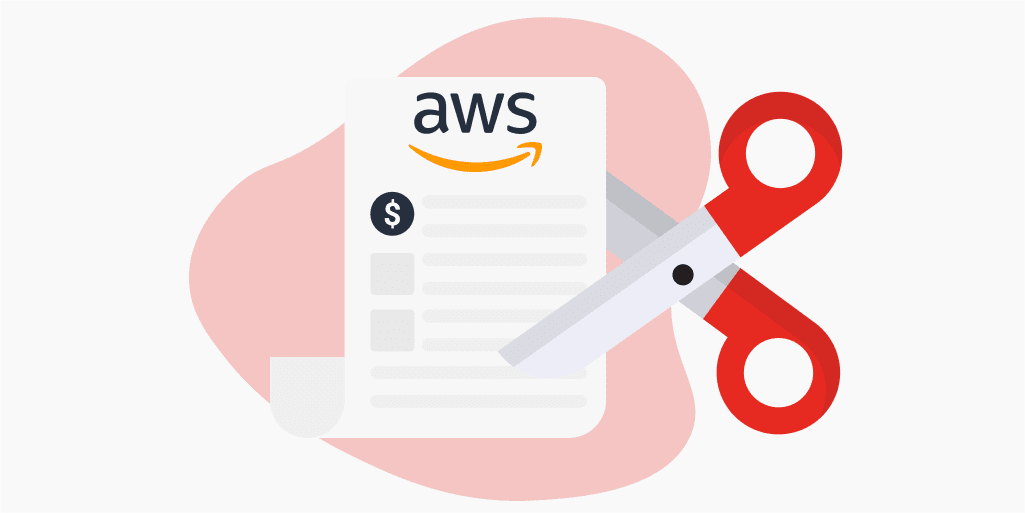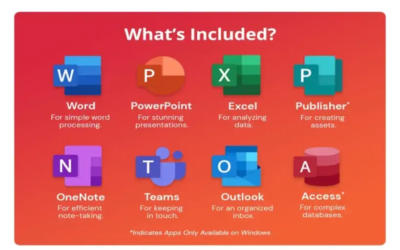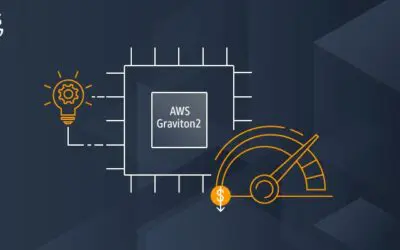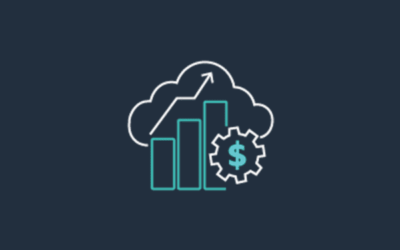Since the beginning of cloud computing, Amazon Web Services (AWS) has been at the forefront, offering an abundance of services for use cases that provide first-class, smooth flying in the cloud.
Different types of environments on AWS require different architectures to meet their specific needs. For a basic environment like website hosting, the ideal expense can range from $100 to $200 USD monthly. An intermediate environment, such as high-performance website hosting, may cost between $250 to $600 USD monthly. An advanced environment that is highly scalable and available could require an investment of $600 to $2500 USD monthly. It’s important to note that these prices can vary based on factors such as the type of EC2 instance, the RDS configuration, traffic/load, CloudFront caching, and the required storage.
This article is for both AWS beginners and adepts eager for the best tools for managing and monitoring resources in a cost-conscious manner. We make it easy for you by breaking down each opportunity into 9 use cases, so you can scrutinize every facet of your bill.
Cost savings on AWS
Companies transitioning to a cloud-based infrastructure receive immediate benefits from services on-demand. You are no longer burdened by investing in expensive hardware and software; AWS offers a spectrum of possibilities, with pay-as-you-go pricing that allows you to experiment before committing.
The main factors that determine AWS pricing include the specific service being utilized, the duration of usage, and how extensively the service is used in terms of hours, minutes, and seconds. AWS pricing is calculated primarily based on the time of usage, with costs aligning with the pay-as-you-go model where customers are charged for the actual resources consumed. Therefore, factors such as the duration of usage, the particular services accessed, and the volume of usage in terms of time play crucial roles in determining the overall pricing for AWS services.
AWS Pricing is based on the principle of paying for the resources you actually use. The charges vary depending on the specific service being utilized and are typically calculated based on the duration of usage, primarily in hours, minutes, and seconds. It is important to note that pricing may differ based on the location of the resources being accessed. For instance, in the US East – Virginia region, there are different services offered by Amazon Web Services, each with its unique pricing structure. The key concept is that customers are billed based on the amount of time they utilize AWS services, aligning with the fundamental notion that you only pay for what you use.
Organize
AWS Cost Allocation Tags
There are two types of tags; AWS generated, and user-defined. Each tag contains a unique key and a value, attached to the services of your choice to track costs on AWS efficiently.
After the tags are activated, AWS organizes them into a detailed report; helping you automate, and consequently save time and money.
AWS Cost Categories
Users can access this feature through the AWS Cost Management product suite, grouping events into specific categories. You can configure your categories to track results from tags, services, charge types, and even other cost categories.
The information is trackable in AWS Cost Explorer, AWS Budgets, and AWS Cost and Usage Report (CUR) at the beginning of each month.
NW2S Cost Calculator
The N2WS AWS Cost Calculator Tool is specifically designed to assist in accurately estimating cloud storage costs. Its purpose is to address the complexities and challenges of the EBS snapshot mechanism and provide a solution for estimating storage costs within AWS. By utilizing this tool, users can better plan their budget by gaining insights into the expected expenses associated with cloud storage.
The AWS Cost Calculator takes into account various factors, such as a team’s backup parameters and specific use case, to provide a more precise estimation of cloud storage costs. This allows users to have a clearer understanding of their financial commitments related to storage.
By leveraging the capabilities of the N2WS AWS Cost Calculator Tool, users can make informed decisions regarding their backup and storage strategies. This tool serves as a reliable resource for estimating expenses, helping users avoid unexpected and potentially challenging budgeting situations. It empowers users by enabling them to proactively plan and manage their storage costs within the AWS ecosystem.
Reports
AWS Cost and Usage Report
Obtain up-to-date and detailed information regarding your spend and usage on AWS. Categorize your reports to record utilization by the hour, day, or month to help you identify areas for optimization.
With a comprehensive overview of usage, individuals can quickly identify opportunities to boost their AWS implementation. Users can also upload their data directly into Amazon QuickSight and Amazon Redshift for total transparency.
Access
AWS Consolidated Billing
With AWS Consolidated Billing, you can track invoices and payments across your entire organization in a unified view. People can merge usage across accounts and share discounts such as those associated with Reserved Instances and Savings Plans.
To top it off, Consolidated Billing is offered with no additional fees!
AWS Purchase Order Management
AWS Purchase Order Management is a simple, self-serve interface for managing your purchase orders (POs). Users can centralize management for their POs and reduce any overhead involved in matching invoices with POs while dialling in on accuracy and efficiency in procure-to-pay processes.
Establish a primary contact to receive notifications for verifying incoming POs and orders that are close to expiration so that you can avoid delays.
AWS Credits
AWS Credits are used to cover costs on your bill for various services and are employed until the credits are exhausted or expired. There are various ways to acquire credits, such as the following:
AWS Activate
With AWS Activate, users can build and scale up to $100,000 in Activate credits, giving your business the lead, and covering some of the startup costs.
Publish an Alexa Skill
Developers looking for increased cash flow can publish an Alexa skill and apply for $100 in credits. Users can do this as many times as they want, although getting approved isn’t always guaranteed.
Attend a Webinar
AWS gives users the ability to obtain credits for attending events and webinars. Simply provide Amazon with proof of your participation and receive the specified amount of credits.
AWS Educate
Amazon is passionate about educating the next generation of cloud cruisers; therefore, they incentivize users with credits of up to $200 per skill learned through AWS Educate.
See how we can help
Control
AWS Identity and Access Management (IAM)
AWS IAM is ideal for people outsourcing their development because you can manage access to individual services securely with it. Permissions can be done on a singular or group level with flexible conditions, such as the time of day, IP address, whether they’re using SSL, and many more.
Having firm control over your resources can ensure that no unforeseen expenses emerge from prohibited regions. Amazon IAM is a complementary feature included with your AWS account.
AWS Cost Anomaly Detection
AWS Cost Anomaly Detection exposes random charges and reduces the risk of surprise hits on your billing statements. Once configured, you can set up daily or weekly reports delivered via SMS of Email for on-the-go alerts right when you need them.
Budget
AWS Budgets
AWS Budgets enables you to specify custom budgets to track your cost and usage of AWS services. You can choose to be alerted via text message or email when capacities have exceeded your predetermined thresholds.
Purchase
AWS Free Tier
For users just beginning their journey on AWS, there is the option to leverage a Free Tier for the free use of specified services. Free tier enables user to make use of AWS services for free for a specific period of time.
AWS Reserved Instances
Amazon EC2 and Amazon RDS enable users to invest in reserved capacity; saving you up to 75% over equivalent on-demand capacity. Users have three options for their instances - all up-front, partial up-front, or no upfront payments.
Discounts are determined based on the upfront payment total. If a user decides to put more money down, they can benefit from greater deals.
AWS Savings Plans
AWS Savings Plans allow users significant savings, up to 72% for AWS EC2, AWS Fargate, and AWS Lambda usage. This plan requires users to choose a 1 or 3 year term with a specified amount of compute power, which is measured in $/hour.
AWS Spot Instances
Amazon Spot Instances allow you to take advantage of dormant EC2 capacity in the cloud. Compared to On-Demand prices, Spot Instances can save you up to 90% and can still be integrated with On-Demand tools to augment workload cost accordingly.
Spot Instances can quickly shift to hibernation mode with just a 2 minute notice when EC2 reclaims the capacity.
Amazon DynamoDB Pricing
When you begin with DynamoDB, you are presented with two pricing models, on-demand and provisioned.
With on-demand capacity mode, you’re charged for the data reads and writes your application performs on your tables. On-demand might be the best decision for you if the following apply:
• Have volatile application traffic
• Create new tables with unknown workloads
• Prefer to only pay for what you use

Note: AWS provides servers at 18 locations around the globe, some regions being more expensive than others. Analyze which regions your establishment is employing and switch to a cheaper region - Northern Virginia, Oregon, Ohio, and Stockholm.
Elasticity
AWS Instance Scheduler
Amazon Instance Scheduler is an innovative stop watch for your EC2 and RDS instances, allowing users to configure procedure start and stop times. You can seamlessly control the throttle on resources to save money when capacity is not needed.
Studies show that organizations who run their capacity at full throttle during all hours are likely to spend up to 70% more than those with specified parameters.
EC2 Auto Scaling
Amazon EC2 Scaling allows you to routinely add and remove instances according to your defined conditions with the dynamic and predictive scaling features. You can leverage the fleet management features in EC2 Auto Scaling to maintain a highly-functioning scope of instances.
In harmony, dynamic and predictive scaling can help you scale faster, stronger, and cheaper than operating in solitary.

Pro Tip: Make sure that you’re using the correct instance size and deleting unused instances. Unneeded capacity will ring up a high bill quickly!
AWS Trusted Advisor
AWS Trusted Advisor is an online resource providing users with on-the-spot guidance to help provision resources with AWS best practices. Trusted Advisor examines your environment and offers advice for scaling your infrastructure with enhanced security and performance, cost-saving opportunities, and service limit assessments.
Rightsize
AWS Compute Optimizer
Over-provisioning resources leads to needless costs, while under-provisioning can result in poor execution. Amazon Compute Optimizer leverages machine learning to examine historical utilization metrics in your workloads and recommends opportunities to prioritize cost outlays and improve performance.
Amazon S3 Intelligent Tiering
Amazon S3 Intelligent Tiering offers 3 classes designed to help you get the most out of your S3 buckets with affordable yet attainable storage. Intelligent Tiering automatically moves objects between four access tiers as soon as it detects a pattern shift.
Inspect
AWS Cost Explorer
AWS Cost Explorer offers an intuitive dashboard for visualizing, understanding, and managing your costs. Users can forecast future costs by identifying trends, pinpoint cost drivers and detect anomalies.
AWS Cost Saving Expert
AWS experts can help you drive better business value with a well-balanced cloud strategy built for agile, scalable, resilient, and cost-effective deliveries.
AllCode is vetted, validated, and verified by AWS to support you in optimizing your workloads and enhancing your experience with AWS. We have helped companies of all sizes develop plans to vitalize their business and liberate assets for high priority pursuits, and we are ready to help you, too!
Related Articles
Top Software as a Service Companies in 2024
Spending for public cloud usage continues to climb with every year. In 2023, nearly $600 billion was spent world-wide with a third of that being taken up by SaaS. By comparison, Infrastructure as a Service only takes up $150 billion and Platform as a Service makes up $139 billion. On average, companies use roughly 315 individual SaaS applications for their operations and are gradually increasing on a yearly basis. SaaS offers a level of cost efficiency that makes it an appealing option for consuming software.
AWS Graviton and Arm-architecture Processors
AWS launched its new batch of Arm-based processors in 2018 with AWS Graviton. It is a series of server processors designed for Amazon EC2 virtual machines. The EC2 AI instances support web servers, caching fleets, distributed data centers, and containerized microservices. Arm architecture is gradually being rolled out to handle enterprise-grade utilities at scale. Graviton instances are popular for handling intense workloads in the cloud.
What is Tiered Pricing for Software as a Service?
Tiered Pricing is a method used by many companies with subscription models. SaaS companies typically offer tiered pricing plans with different services and benefits at each price point with typically increasing benefits the more a customer pays. Striking a balance between what good rates are and the price can be difficult at times.


A self-motivated digital marketing specialist with 3+ years of experience advertising in the financial services industry.
While I wear several marketing hats, my primary focus is on content strategy and curation.
I aim to consistently challenge myself and position my skills toward personal and professional endeavors that lead to measurable results.




